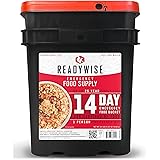Understanding Climate-Related Disasters
The Nature of Climate-Related Disasters
Climate-related disasters encompass a broad range of events, including hurricanes, wildfires, floods, and
droughts. These disasters are becoming more frequent and severe due to climate change, making it imperative to
understand their nature and the risks they pose.
For instance, hurricanes are not just powerful storms; they bring heavy rainfall and strong winds that can cause
widespread destruction. Similarly, wildfires are exacerbated by prolonged periods of drought and high
temperatures, leading to faster and more unpredictable fire spread.
Understanding the unique characteristics of each type of disaster allows us to better prepare and respond.
Knowledge is power, and in the case of climate-related disasters, it can mean the difference between safety and
catastrophe.
The Science Behind Increasing Disasters
Scientists have long warned about the link between climate change and the increase in frequency and intensity of
natural disasters. The warming of the Earth’s atmosphere and oceans contributes to the formation of more
powerful storms and extreme weather conditions.
For example, rising sea temperatures provide more energy for hurricanes, making them stronger and more
destructive. Additionally, higher atmospheric temperatures can lead to prolonged droughts, which create perfect
conditions for wildfires.
Understanding the science behind these disasters is crucial for creating effective preparation and mitigation
strategies. It’s not just about acknowledging that these events are happening more frequently, but also
understanding why and how they are intensifying.
Historical Impact of Climate Disasters
Looking back at historical data, we can see the devastating impact of climate-related disasters on communities
worldwide. From the 2004 Indian Ocean tsunami to Hurricane Katrina in 2005, these events have left a lasting
mark on our collective memory.
These historical events highlight the importance of being prepared. In many cases, the loss of life and
destruction of property could have been mitigated with better preparation and response strategies.
== > What if ... Get a FREE Subscription to PREPARE
Using history as a teacher, we can learn valuable lessons about what works and what doesn’t when it comes to
disaster preparedness. This allows us to improve our strategies and better protect our communities in the
future.
The Importance of Disaster Preparedness
Protecting Lives and Property
One of the primary reasons to prepare for climate-related disasters is to protect lives and property. Proactive
preparedness measures can significantly reduce the risk of injury and death, as well as minimize property
damage.
Simple actions like creating an emergency plan, building a disaster supply kit, and securing your home can make a
big difference in an emergency. These steps ensure that you’re ready to act quickly and efficiently when
disaster strikes.
Additionally, educating yourself and your family about potential hazards and the appropriate responses can
increase your chances of staying safe during a disaster. Knowledge and preparation are your best defenses
against these unpredictable events.
Reducing Economic Impact
Climate-related disasters can have a devastating economic impact on individuals, businesses, and entire
communities. The cost of rebuilding and recovery can be astronomical, often placing a significant burden on
local economies.
Investing in disaster preparedness can help mitigate these economic impacts. By taking steps to protect your
property and assets, you can reduce the financial fallout after a disaster. This can include anything from
purchasing insurance to reinforcing the structural integrity of your home or business.
On a larger scale, communities that invest in resilience measures tend to recover more quickly and effectively
after a disaster. This underscores the importance of preparedness not just on an individual level, but as a
communal effort to protect economic stability.
Ensuring Continuity of Services
Disaster preparedness is also crucial for ensuring the continuity of essential services. Hospitals, emergency
services, and utilities must remain operational during and after a disaster to provide critical support to the
affected population.
For example, hospitals must be equipped to handle an influx of patients, while emergency services need to have
the resources and planning in place to respond swiftly. Utilities like power and water should have contingency
plans to minimize disruption.
By ensuring that these services continue to function, we can better support the affected population and facilitate
a faster recovery. This requires careful planning and coordination among various agencies and organizations.
Effective Preparation Strategies
Developing a Family Emergency Plan
One of the first steps in preparing for climate-related disasters is developing a family emergency plan. This
involves identifying potential hazards, creating a communication strategy, and establishing meeting points in
case you’re separated during a disaster.
Your plan should also include details on how to evacuate safely, what to do with pets, and how to handle medical
needs. By involving everyone in the planning process, you ensure that all family members understand what to do
and feel more confident in their ability to respond effectively.
Regularly reviewing and practicing your emergency plan is also essential. This helps you identify any gaps or
areas for improvement and ensures that everyone remains familiar with the procedures.
Building an Emergency Supply Kit
Another crucial aspect of disaster preparedness is building an emergency supply kit. This kit should include
essentials such as water, non-perishable food, medications, first aid supplies, and important documents.
Consider the unique needs of your family when assembling your kit. This might include baby supplies, pet food, or
specific medical equipment. Your kit should be easily accessible and portable in case you need to evacuate
quickly.
Regularly checking and updating your emergency supply kit is also important. Ensure that items remain in good
condition and replace any expired or outdated supplies. This ensures that your kit is always ready when you
need it.
Strengthening Home and Property
Strengthening your home and property can significantly reduce the risk of damage during a climate-related
disaster. This might involve reinforcing roofs, installing storm shutters, or securing heavy furniture and
appliances.
In areas prone to flooding, consider elevating your home or installing flood barriers. For wildfire-prone
regions, creating a defensible space around your property by clearing vegetation and using fire-resistant
building materials can make a big difference.
Taking these proactive measures not only protects your property but also enhances your peace of mind. Knowing
that you’ve done everything possible to safeguard your home can reduce stress and anxiety when facing a
potential disaster.
Community and Governmental Roles
The Role of Local Governments
Local governments play a critical role in disaster preparedness and response. They are responsible for creating
emergency response plans, maintaining critical infrastructure, and providing timely information and resources to
the public.
Communities should engage with their local government to understand the specific hazards they face and the
measures in place to mitigate these risks. This might include attending public meetings, participating in
community planning sessions, or accessing local government resources and training programs.
By working closely with local governments, communities can ensure that their needs are addressed and that they are
better prepared for climate-related disasters.
The Importance of Community Involvement
Community involvement is essential for effective disaster preparedness and response. Neighbors helping neighbors
can make a significant difference during and after a disaster.
Community groups and organizations can provide valuable support, from spreading awareness and education to
organizing local emergency response teams. These grassroots efforts can complement government initiatives and
enhance overall resilience.
Building strong community networks also fosters a sense of solidarity and mutual support, which is crucial during
challenging times. When everyone works together, the whole community becomes more resilient and better equipped
to handle disaster impacts.
The Role of Non-Profit Organizations
Non-profit organizations often play a vital role in disaster preparedness and response. These organizations can
provide resources, training, and support to individuals and communities, helping them build resilience and
recover more effectively.
For example, organizations like the Red Cross offer emergency preparedness training and resources, while others
focus on specific needs such as medical aid, food distribution, or mental health support.
Supporting and collaborating with non-profit organizations can enhance community preparedness and response
capabilities. These organizations bring valuable expertise and resources to the table, helping to fill gaps and
address needs that might otherwise go unmet.
FAQ
What are some common climate-related disasters?
Common climate-related disasters include hurricanes, wildfires, floods, and droughts. These events are becoming
more frequent and severe due to climate change.
Why is disaster preparedness important?
Disaster preparedness is important because it helps protect lives and property, reduces economic impact, and ensures
the continuity of essential services during and after a disaster.
What should be included in an emergency supply kit?
An emergency supply kit should include essentials such as water, non-perishable food, medications, first aid supplies,
and important documents. Consider the unique needs of your family when assembling your kit.
How can we involve our community in disaster preparedness?
Communities can get involved in disaster preparedness by engaging with local governments, attending public meetings,
organizing emergency response teams, and collaborating with non-profit organizations to build resilience.






